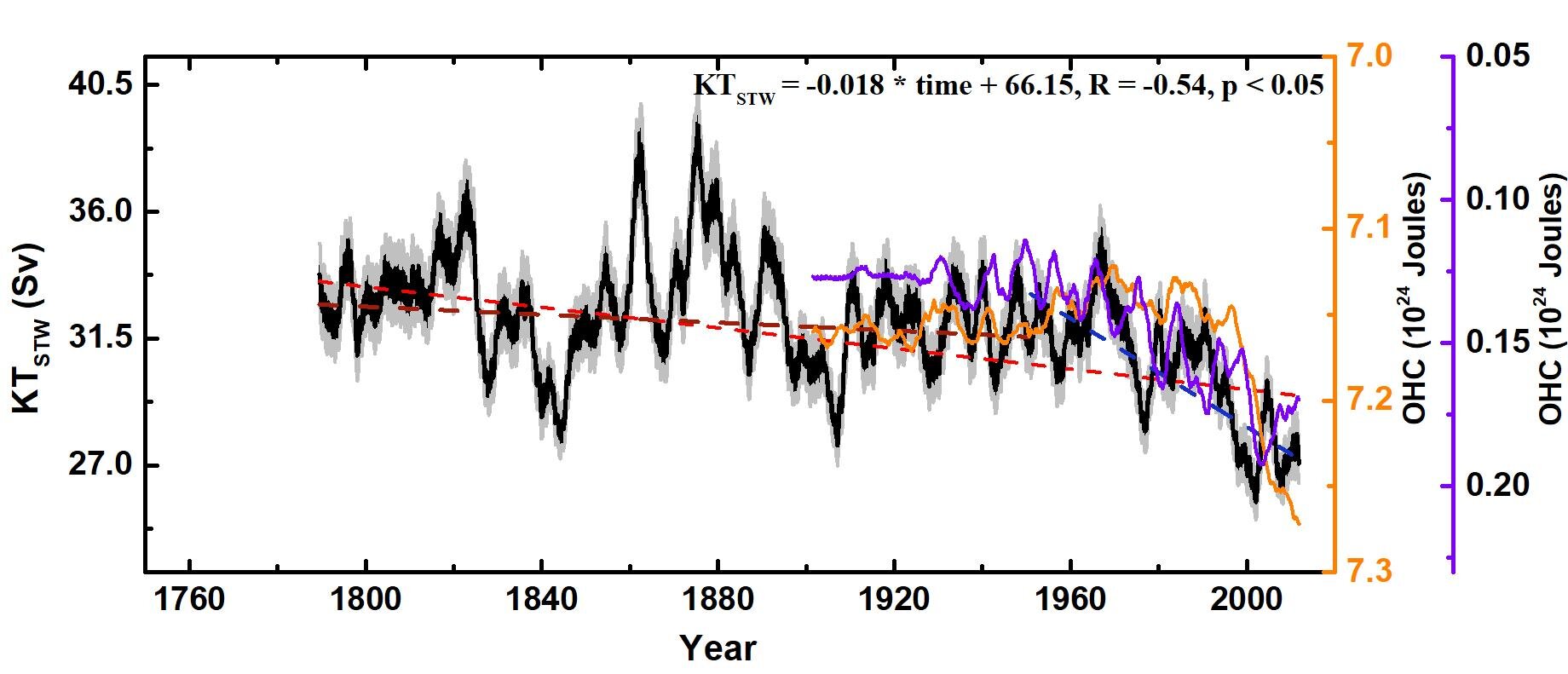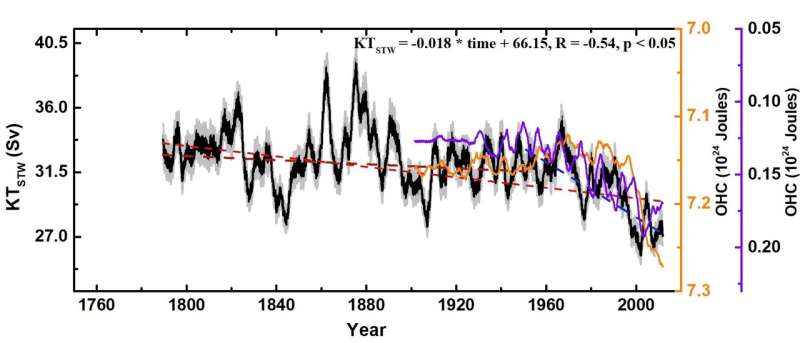

The Kuroshio is a strong western boundary current in the North Pacific. It transports warm, saltier waters from low to middle latitudes, and has a significant impact on China, East Asia and even the global climate. How the Kuroshio changed before the Industrial Revolution was poorly understood due to the scarcity of observational data.
Recently, a research team led by Prof. Hu Shijian from the Institute of Oceanology of the Chinese Academy of Sciences (IOCAS) investigated the Porites coral Sr/Ca ratios from southern Taiwan island, which can record the long-term variability of the Kuroshio.
The study is published in Global and Planetary Change.
Considering that the Kuroshio strongly affects the sea surface hydrographic conditions, changes in sea surface temperature can be used as an indirect indicator of changes in the Kuroshio.
Hu and his team found that the monthly coral Sr/Ca ratio, a reliable proxy for sea surface temperature, could record the interannual changes of Kuroshio transport. They used the proxy to generate a continuous reconstruction of Kuroshio transport during the period from 1788 to 2013.
“The data shows a consistent decline in Kuroshio transport since 1788, with the rate of decline increasing since the 1950s, probably due to rapid oceanic warming,” said Li Xiaohua, first author of this study.
In addition, the shift of bifurcation latitude of the North Equatorial Current, the phase transition of the Pacific Decadal Oscillation and El Niño-Southern Oscillation have also influenced the changes of the Kuroshio, according to the researchers.
“This study presents a case study on ocean current changes using coral geochemical indexes, and fossil corals can be used in the future to trace paleocurrent changes,” said Prof. Hu, also the corresponding author of the study.
More information:
Xiaohua Li et al, Long-term variability of the Kuroshio since 1788 based on coral records, Global and Planetary Change (2024). DOI: 10.1016/j.gloplacha.2024.104611
Provided by
Chinese Academy of Sciences
Citation:
Coral record reveals long-term variability of Kuroshio (2024, October 28)
retrieved 28 October 2024
from https://phys.org/news/2024-10-coral-reveals-term-variability-kuroshio.html
This document is subject to copyright. Apart from any fair dealing for the purpose of private study or research, no
part may be reproduced without the written permission. The content is provided for information purposes only.